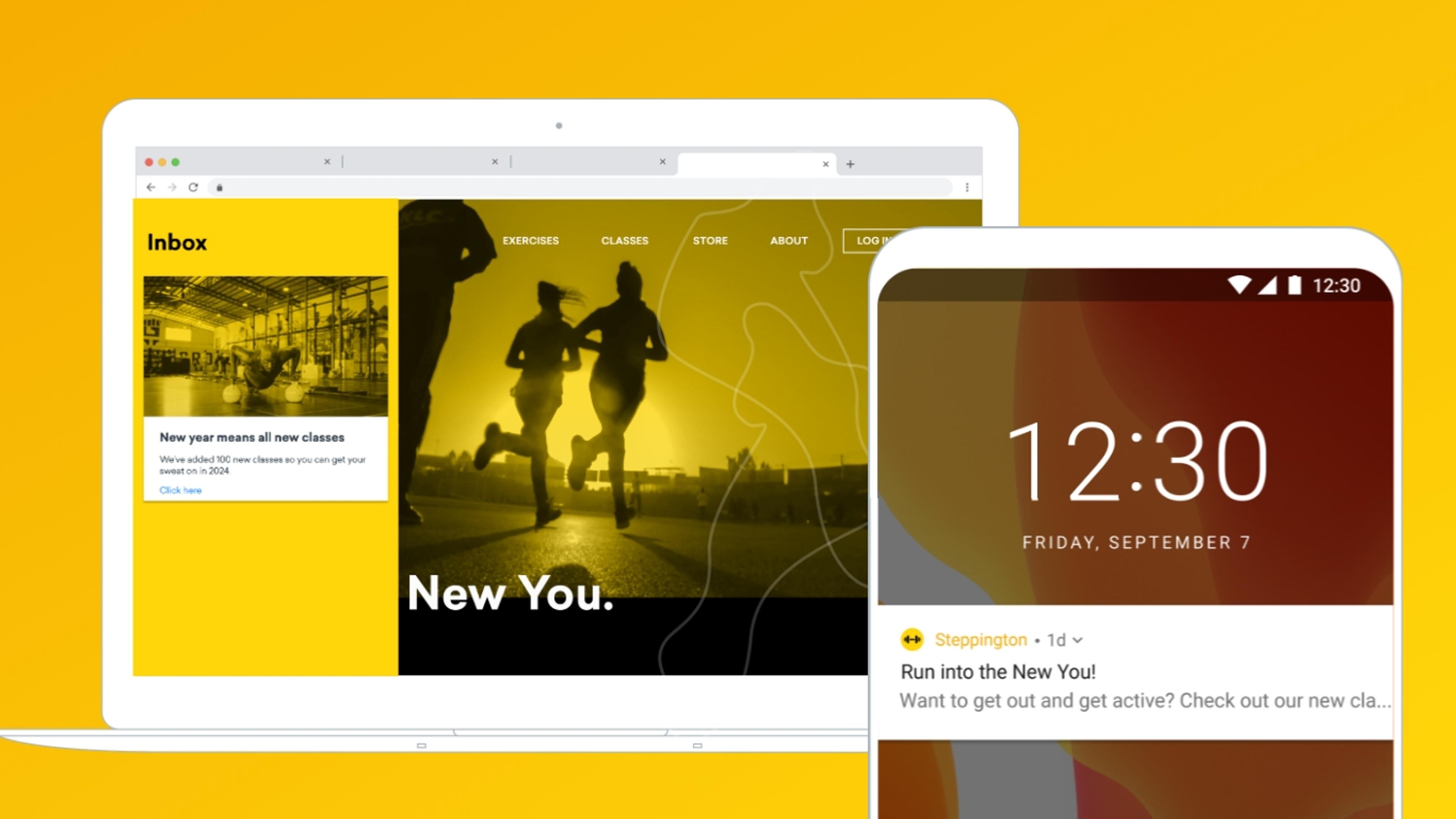Lesson
About Content Cards
As a marketer, you know there is no one right way to achieve your customer engagement goals. In fact, it’s important to work flexibly with your messaging tool belt to connect with your audience. One popular tool for many marketing teams is the use of banner advertising.
| Term | Definition |
|---|---|
| Banner Advertising | A rectangular graphic on a website or online platform that covers the top, bottom, or sides of the page. |
Banner advertising helps increase brand awareness, however, it does create some pain-points for marketers. This includes:
- Lack of Personalization
Static banners have a one-size-fits-all approach, meaning all of your users will see the same exact promotion instead of one that is unique to their preferences. - Restricted Analytics
Static banners can only get very basic click-through analytics. - Time Consuming and Resource Heavy
Developers need to manually code all banner variants, taking up time and creating a bottleneck for marketers.
You need a tool that offers flexibility and control of your customer’s messaging experience. Braze has a channel that does exactly that – say hello to Content Cards.

What are Content Cards?
Content Cards are short, persistent messages that can live in a variety of places on your app or website. Watch the video below to learn more about Content Cards.
Content Cards are an add-on feature within Braze. Get in contact with your Customer Success Manager to learn more.
Content Cards in a Cross-Channel Approach
Though powerful on their own, you can combine Content Cards with other channels for an enhanced customer experience.
For example, you might send a push notification, and then show that same information as a Content Card on your website or app. This way, users without push notifications can still receive the message. Users who swiped through your push notification will get another chance to see the content.
You can also use Content Cards to explain the value of opt-in channels, such as SMS or email, or reach users who don’t use those channels at all.

When choosing which channel to use with your Content Cards, think about these factors:
- Opt-in requirements
Content Cards do not require opt-in from your users; how can you use this to create a balanced strategy between them and ones that do? - Message urgency
Consider the urgency level of Content Cards. Assess if certain timely content might benefit from additional promotion in another channel for better engagement. - Message richness
Can a shorter, attention-grabbing channel entice your audience to visit your app or site and explore the detailed Content Cards available?
Key Takeaways
- Content Cards are short, persistent messages that can live in a variety of places within your app or website.
- Braze offers three types of Content Cards: Text only, Image with text, and Image only.
- Content Cards can be placed in a variety of locations, including Message inbox, Carousel, and Banner.
- Content Cards can be used for a variety of use cases, including ongoing promotions, onboarding flows, new product announcements, and more.
- Content Cards require developer support for basic SDK integration.
- Content Cards offer many advantages including centralized reporting, improved personalization, and higher degrees of flexibility.